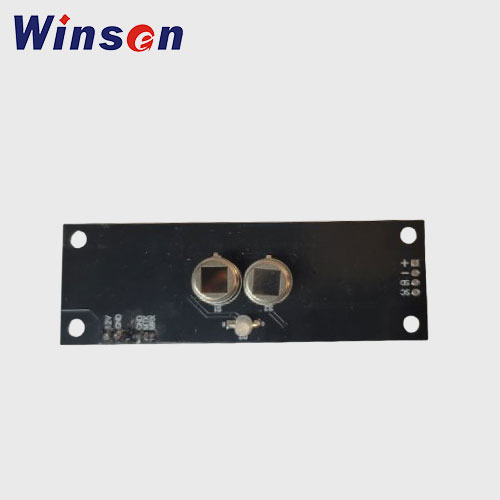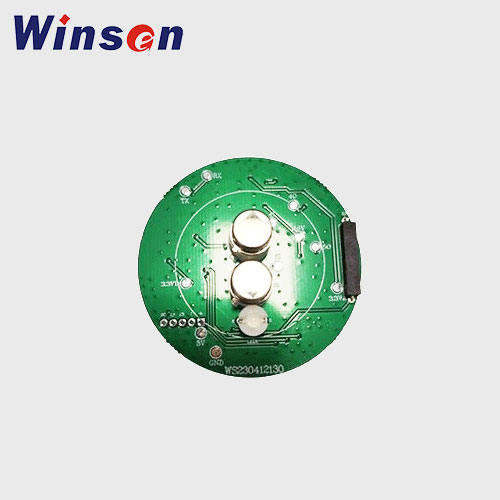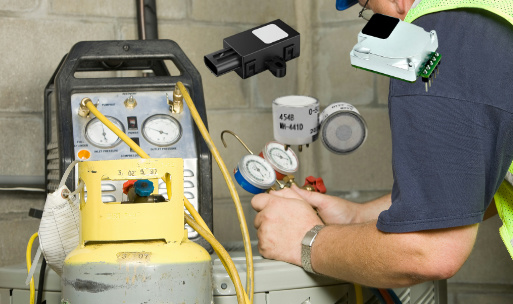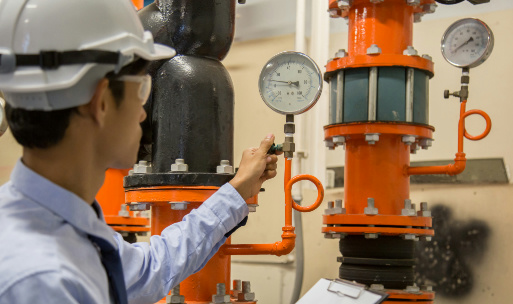What is a Flame Sensor? A Comprehensive Guide to Fire Detection
What is a Flame Sensor?
A flame sensor is a a crucial component used in fire detection systems to detect the presence of flames. It is designed to sense the unique characteristics of flames, such as light, infrared radiation, or ultraviolet radiation, depending on the type of flame sensor. The primary function of a flame sensor is to trigger appropriate actions, such as sounding alarms, activating fire suppression systems, or initiating emergency protocols, to mitigate the risk posed by a fire.
Flame sensors are commonly used in industrial settings, commercial buildings, and residential properties to provide early detection of fires and help prevent potential disasters.
Why It Matters?
- 1.Early Detection: Reliable flame detection allows for the early identification of flames in its initial stages. This is crucial as fires can spread rapidly, causing extensive damage and endangering lives. By detecting flames early, appropriate actions can be taken promptly to prevent the fire from escalating.
- 2.Prompt Response: With reliable flame detection, fire response teams can be alerted immediately, enabling them to respond quickly and efficiently. This allows for a faster deployment of resources, such as firefighters and fire suppression systems, to the affected area before it spreads further.
- 3.Minimized Damage and Losses: Early detection allows for the implementation of necessary measures, such as activating fire suppression systems, evacuating occupants, and isolating affected areas, to minimize the impact of the fire.
- 4.Life Safety: The primary concern during a fire is the safety of individuals present in the affected area. Reliable flame detection systems play a vital role of ensuring the timely evacuation of occupants, reducing the risk of injuries or fatalities, reducing the likelihood of being trapped or overcome by smoke and toxic gases.
How Flame Sensors Work?
Flame sensors typically utilize infrared sensors to detect the unique radiation emitted by flames. When a flame is present, the sensor detects the infrared radiation and generates an electrical signal. This signal is then processed by the fire detection system to trigger an alarm or activate fire suppression measures.
Types of Flame Sensors
Optical Flame Sensors
Optical flame sensors rely on the detection of light emitted by flames. They typically consist of a photodetector, which converts light into an electrical signal, and a lens that focuses the light onto the detector. When a flame is present, it emits light across a specific wavelength range. The optical flame sensor detects this light and generates an electrical signal, indicating the presence of a flame.
Infrared Flame Sensors
Infrared flame sensors detect the infrared radiation emitted by flames. They use a specialized sensor that is sensitive to infrared wavelengths. When a flame is present, it emits infrared radiation, which is absorbed by the sensor. The sensor then converts the infrared radiation into an electrical signal, indicating the presence of a flame. Infrared flame sensors are particularly effective in environments where there may be background infrared radiation, such as in industrial settings. They can differentiate between the specific characteristics of flame radiation and other sources of infrared radiation.
Ultraviolet Flame Sensors
Ultraviolet flame sensors detect the ultraviolet (UV) radiation emitted by flames. These sensors typically consist of a UV-sensitive photodetector and a filter that blocks out non-flame UV radiation. When a flame is present, it emits UV radiation that passes through the filter and reaches the photodetector. The photodetector then converts the UV radiation into an electrical signal, indicating the presence of a flame.
Winsen Flame Sensor
Winsen pyro-electric flame sensor uses lithium tantalate single crystal as the sensitive element material. The Curie temperature of lithium tantalate crystal material is above 600℃, the relative dielectric constant is small, and the specific detectivity is high.
In a wide range of room temperature, the pyroelectric coefficient of the material changes very little with temperature, and the temperature change rate of the output signal is only 1-2‰. The temperature stability of the sensor performance is very good, and the spectral response consistency is very good in the wavelength range of 1-20um.
Winsen Flame Sensor Module Solutions
ZRP330 is a triple flame sensor module used in the flame detector with different wavelengths with narrow-band filtering. One sensor is used to reflect the center wavelength of the flame information. The other two sensors are used to monitor other infrared radiation in the environment. Combining with the flicker characteristics of the flame, analyzing through high-speed microprocessors and calculating by mathematical algorithms, the radiation spectrum with flame characteristics is confirmed as a fire alarm. The detector suppress the interference of sunlight, lightning, electric welding, thermal radiation, electromagnetic interference, mechanical vibration and other interference, thus achieving the rapid response and accurate identification of the flame sign.

The three flame sensors can also be customized to linear combination and integrated with camera to achieve a compact design of the detector. Combining the flame sensors and camera, the detector is able to identify the location, size and combustion state of the fire source by capturing and analyzing the thermal radiation generated by the flame.

More flame sensor solutions

Applications of Flame Sensors
1.Industrial Settings: Flame sensors are widely used in industrial environments to detect and monitor flames in processes involving combustible materials. They are employed in applications such as oil and gas industry, fuel and gas monitoring, combustion control systems, warehouses. By detecting flames, these sensors ensure the safe operation of industrial equipment and help prevent accidents or explosions.
2.Commercial Buildings: Flame sensors play a vital role in fire safety systems within commercial buildings, such as offices, hotels, shopping malls, and hospitals. They are integrated into fire detection systems to provide early warning and initiate appropriate responses, including activating alarms, triggering sprinklers, and notifying emergency services. Flame sensors are critical in protecting occupants, minimizing property damage, and facilitating safe evacuations.
3.Residential Spaces: Flame sensors are used in residential settings to enhance fire safety. They can be found in homes, apartments, and condominiums, integrated into smoke detectors and fire alarm systems. Flame sensors help detect fires in their early stages, allowing residents to take immediate action, evacuate, and alert the authorities.
4.Automotive and Aerospace: Flame sensors are used in automotive and aerospace industries for fire detection and suppression in vehicles and aircraft. They are integrated into systems that monitor engine compartments, fuel tanks, and other critical areas, providing early warning in case of fire. Flame sensors play a crucial role in preventing fires and protecting passengers and valuable equipment.
5.Power Generation and Storage: Flame sensors are crucial in power plants, power storage facilities, both conventional and renewable, to monitor flames and ensure safe operation. By detecting flames, these sensors enable timely intervention, preventing potential hazards and maintaining the stability and reliability of power generation systems.
6.Forest Fire Prevention and Monitoring: Flame sensors play a crucial role in forest fire prevention and monitoring systems. They can be strategically placed throughout the forest, and when detecting flames or smoke, they trigger alarms or transmit signals to a central monitoring station. This enables early detection and rapid response to potential forest fires, allowing firefighting teams to intervene quickly and minimize the damage caused by wildfires.
Conclusion
Flame sensors play a critical role in fire detection systems, enabling early detection and mitigation of fire risks in various settings. By understanding the working principle, applications, and benefits of flame sensors, stakeholders can make informed decisions to enhance fire safety measures. Whether in industrial, commercial, or residential environments, the integration of flame sensors contributes to the protection of lives, property, and the overall well-being of individuals. Continual advancements in flame sensor technology will further improve fire detection capabilities, promoting safer environments for all.














